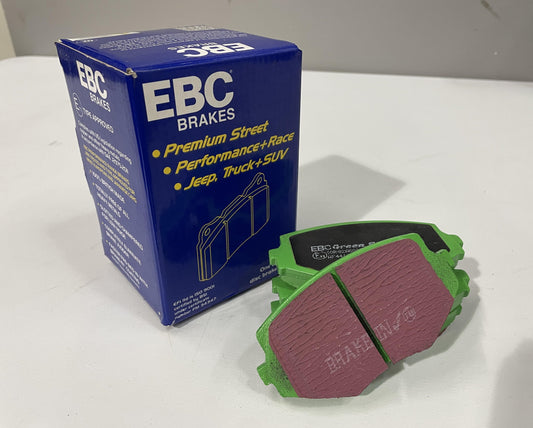Brake pads! There is no one-size-fits-all when it comes to brakes. Due to the extreme thermal ranges, varying durations of use, and the speeds when the brakes are applied, it's important to select the correct pad for your application. Most of the time when we see poor reviews of pads online, it's due to the pad being used in an application it was not designed for.
Below is a list of some of the most common brake pads for Miata's.

First, let's look at the temperature range each pad is designed for. For any pad being used on the street, the min operating temp is very important. We want the pad to work from the very first application, when everything is at room temp. many track pads don't work (or at least, not well) when cold. Or they will be very noise, dusty and grabby until they get into their designed temp window.
Then we look at the max temp rating. If you exceed the max temp be prolonged braking, or braking from very high speed, the brake can fade or go away completely. Overheat the pad can also permanently damage the pad. If you're doing track driving, or very aggressive street driving (hill climbs, endurance racing, etc) you want a pad that will stand up to the high temps it's going to see.

Next let's look at the friction coefficient. This is a measurement of how much resistance to turning the pad can apply. We could make some pads out of solid steel and they would survive the heat just fine, but they aren't going to have much stopping power. the higher the MU number, the more "bite" the pad will have. (All friction numbers are recorded when the pad is in their peak thermal operation window)
Let's say we're picking out a pad for autocross. The Hawk HP+ has the highest friction coefficient, and thus the most "bite". However, it needs to be at a slighter warmer temp to reach this value. So an EBC Greenstuff or Stoptech Sport might be a better choice, depending on your car, class, and local climate.
Similarly for a track car, the Hawk DTC-70 has the most grip by a long way, but has to get over 500 degrees to work. for an endurance car, this isn't a problem. but for a hill-climb, this could be an issue.

Lastly, if the car is going to be driven on the street, there are other factors to consider. Noise, dust, cost, and life of the pad may make a difference. This can take a bit of research as each pad manufacturer has different ratings for these variables. And coupling the pads with different rotor types can impact things as well.




